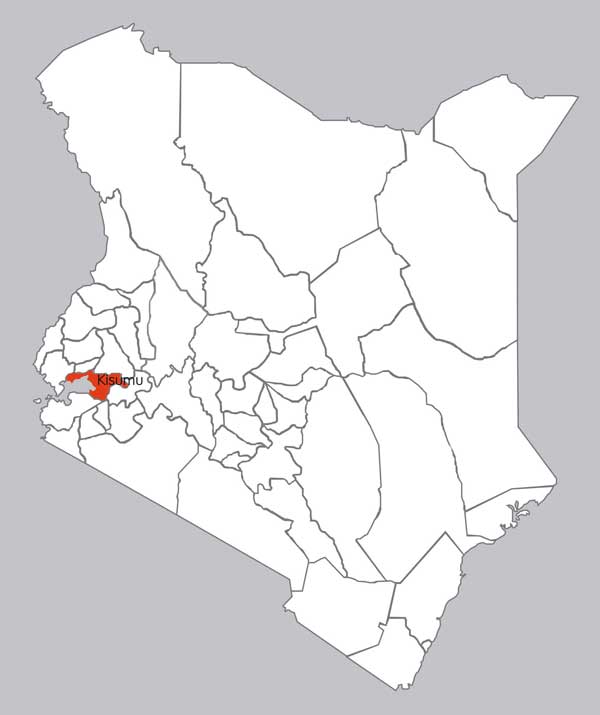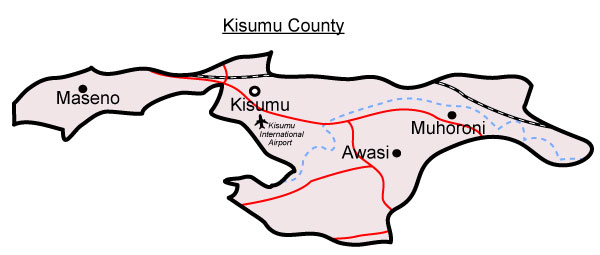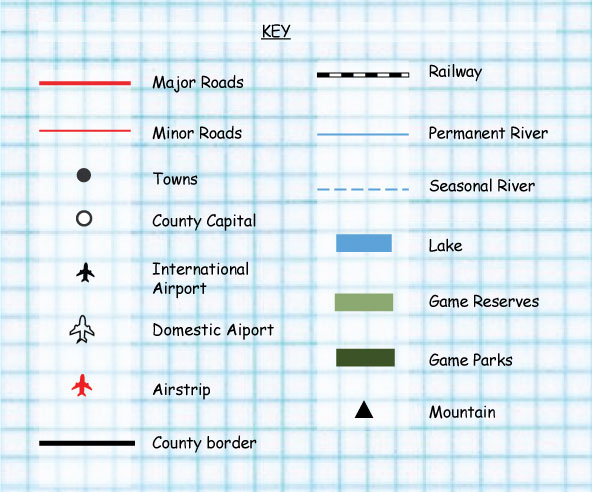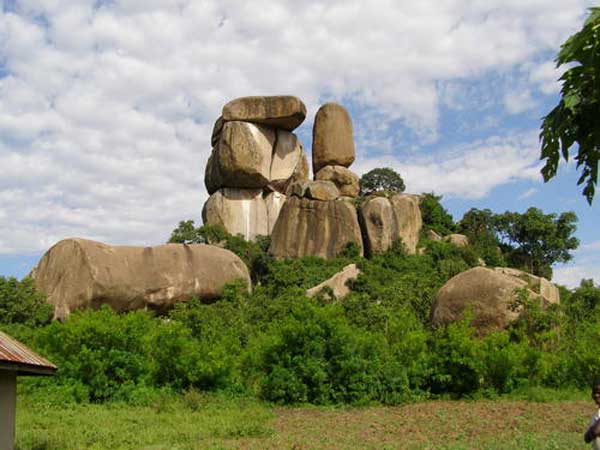Kisumu County
Introduction
Kisumu County is a county in Nyanza province one of the new developed counties in the country.
Its borders follow those of the original Kisumu District. Its headquarters is Kisumu town.
Its population is 968,909 according to the 2009 National Census. The land area of Kisumu County totals 2085.9 km².
Its neighbours are Siaya County to the West Vihiga County to the North, Nandi County to the North East and Kericho County to the East. Its neighbor to the South is Nyamira County and Homa Bay County is to the South West. The county has a shoreline on Lake Victoria, occupying northern, western and a part of the southern shores of the Winam Gulf.
The luo called it "Kisumo" meaning "a place to look for food”.


Constituencies
It consist of seven constituencies
- Kisumu East
- Kisumu West
- Kisumu Central
- Nyando
- Seme
- Muhoroni
- Nyakach
Physical features
Rivers
Lakes
Mountains
Plains
Valleys
The importance of physical features
- Lake Victoria is a source of employment and revenue and a home to fish.
- Mboha valleys is known for agriculture, especially tomatoes.

- Lake Victoria is also used for transportation and recreation.
Main types of natural vegetation
- The main type of vegetation in the county is savannah woodland vegetation
The importance of vegetation
- The forest is source of fruits and herbal medicinal plants.
- Affects soil development overtime and generally contributing to a more productive soil.
- Gives spiritual and cultural experience to some communities.
- Provides wildlife habitat and food.
Map of the Distribution of natural vegetation


People and population
language groups
Kisumu County is relatively densely populated as compared to other counties in Kenya. The Luo make up the majority of the people, it is the third largest tribe in Kenya. Other minority tribes include the Indians who came during the construction of the railways and formed a community in Kisumu. Another tribe is the Luhya who are the smallest group and mainly came in for trade.
The dominant language is Dholuo.
Areas of high population density
- Kisumu East
- Kisumu West
- Kisumu Central
Areas of low population density
Social relations and cultural activity
The traditional way of life of the people
Food
- Fish and ugali are the staple foods of the Luo tribe. Some fish are consumed locally others are exported to Europe and other countries
Dressing
- Traditionally, the Luo wore minimal clothing. Animal hides were used to cover private parts, there was no shame in nudity.
Songs and dances
- Songs are popular today as in the past. Musicians praise and lament political, generational, economic, and cultural contradictions in contemporary life. Luo devote much time to listening to music. Stories, legends, riddles, and proverbs are an important part of Luo culture. They were recited in the home of a widowed grandmother known as siwindhe, Luo boys and girls gather there in the evenings to be taught the traditions of their culture.
Traditional medical practices
The ceremonies and festivals held
Ceremonies
This was done a few days after birth, by the parents of the child. Luos were naming their children after their dead relatives, the time and the season the child was born, and if a mother conceived without seeing her periods. Children born at a certain time were named after that time, i.e. Otieno/Atieno, these are children born at night, Okoth/Akoth born during rainy season, Okumu/Akumu born without the mother seeing her periods. Naming children after the dead relatives has now stopped, but they still name them after the seasons, time of birth and the living relatives
Luo people are among the few Kenyan tribes that do not traditionally circumcise their males as an initiation to manhood. Instead, in Luo traditions, initiation involves the removal of six teeth from the lower jaw.
Festivals
After harvesting it was the first wife and the husband who had to be the first to eat the newly harvested crops. Where a man had only one wife as opposed to being polygamous, then everything was done with just his sole wife.
Ohangla is a traditional dance among the Luo community. It was used to celebrate weddings and also in funeral ceremony as part of Tero Buru. Ohangla consists of more than 8 drums hit by a stick and a cylindrical shoulder slung drum played normally to the accompaniment of flute, Nyatiti or Kinanda.
Folk songs and folk tales were told in the evening. They had moral lessons and also told the history of the community to the community young boys and girls.
Resources and economic activities
Agriculture
The main cash crops and food crops grown
- Maize, tomatoes, cotton, sisal, tobacco, beans, sugar cane, coffee, sorghum, millet, wheat and root crops
The areas where the cash crops are grown
- Kibos
- Miwani
- Chemelil
- Sorghum and tomatoes are grown in Mbona valley
The types of livestock kept
Fishing
The areas where fishing is practiced
Forestry
The major forests
- Kakamega forest is a tropical rainforest located in Kakamega and Kisumu.
Wildlife and Tourism
The types of wildlife
- Over 115 species of birds have been recorded.
- The big five animals except the elephant.
- Many species of snake, monitor lizard, dragon fly, frog, and butterfly are also present.
The game parks and reserves
- Kisumu Impala Sanctuary which lies on the shores of Lake Victoria,
- Dunga Bay
- Ndere Island National Park in Kisumu
- Lake Kanyaboli National Reserve in Kisumu
The major tourist attractions
The main tourist attractions in Kisumu are

- Hippo Point
- Kisumu Impala Sanctuary

- Dunga Beach and Wetlands
- Kisumu Museum
- Town Clock
Industries
The traditional industries
- Jua kali industry
- Irrigation industry because of lake Victoria
- Fishing
Trade
The major trading centers
- The main trading center is Kisumu, products of trade include livestock, fish and crops. Luanda is also a trading center.






